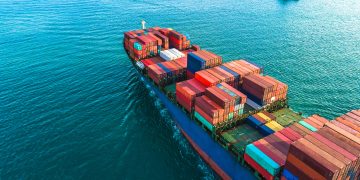Setting Targets for 2030
 As 2020 edges closer and governments and investors demand certainty beyond, we are witnessingthe first moves towards a new EU climate and energy package with 2030 objectives.
As 2020 edges closer and governments and investors demand certainty beyond, we are witnessingthe first moves towards a new EU climate and energy package with 2030 objectives.
But how much must EU greenhouse gas emissions be reduced in order to be effective, adequateand fair? And how can robust 2030 policies help to restore the credibility and effectiveness of theEU emissions trading system (ETS)?
An analysis entitled as “The Next Step in Europe’s Climate Action: Setting Targets for 2030” commissioned by Greenpeace and conducted by Ecofys, illustrates how through theapplication of widely accepted effort sharing approaches, the EU’s ‘fair share’ in 2030 global emissionsreductions could be around 49% compared to 1990 levels (the 49% figure representing the median ofa full range from 39 to 79%).
Moreover it reveals that in order to restore the effectiveness of the ETS,and accommodate its current surplus of allowances, an additional reduction of 7 percentage pointswill be required.
The effectiveness of the ETS – seen as an important instrumentfor reducing emissions in industry and energy generation,now and in the longer term – has been the subject ofintensive debate. A large surplus of emissions allowanceshas accumulated in the system, due to a significant inflow ofinternational offset credits of an unprecedented scale and toa significantly reduced industrial production because of theeconomic downturn.
ETS rules allow the large surplus to be banked and used infuture years of the ETS. This surplus of emissions allowances isexpected to last for at least a decade.
Several options would allow the EU to ensure its ‘fair share’towards a 2C pathway, while tackling the surplus of allowancesin the ETS and move towards 80 to 95% emissions reductions by2050.
Find more information at Ecofys analysis – “The Next Step in Europe’s Climate Action: Setting Targets for 2030 “
|
The 2C emission pathway makes no assumptions over thecontributions of either the shipping or aviation sectors or of any particular nations’efforts. It merely shows what the overall global emission reduction trend must be toreach the 2C target. If current projections of emissions from shipping and aviation to2050 are placed in the context of such an overall global 2C emissions reductionpathway, then shipping might contribute between approximately 6% and 18% ofmedian permissible total CO2-equivalent emissions in 2050 to meet the pathway, and aviation might contribute between approximately 4% and 15% of median total CO2-equivalent emissions, and the two sectors together might contribute betweenapproximately 10% and 32% of total median CO2-equivalent emissions in 2050. Further information on ”Shipping emissions in the context of a 2C emission pathway” |


























































